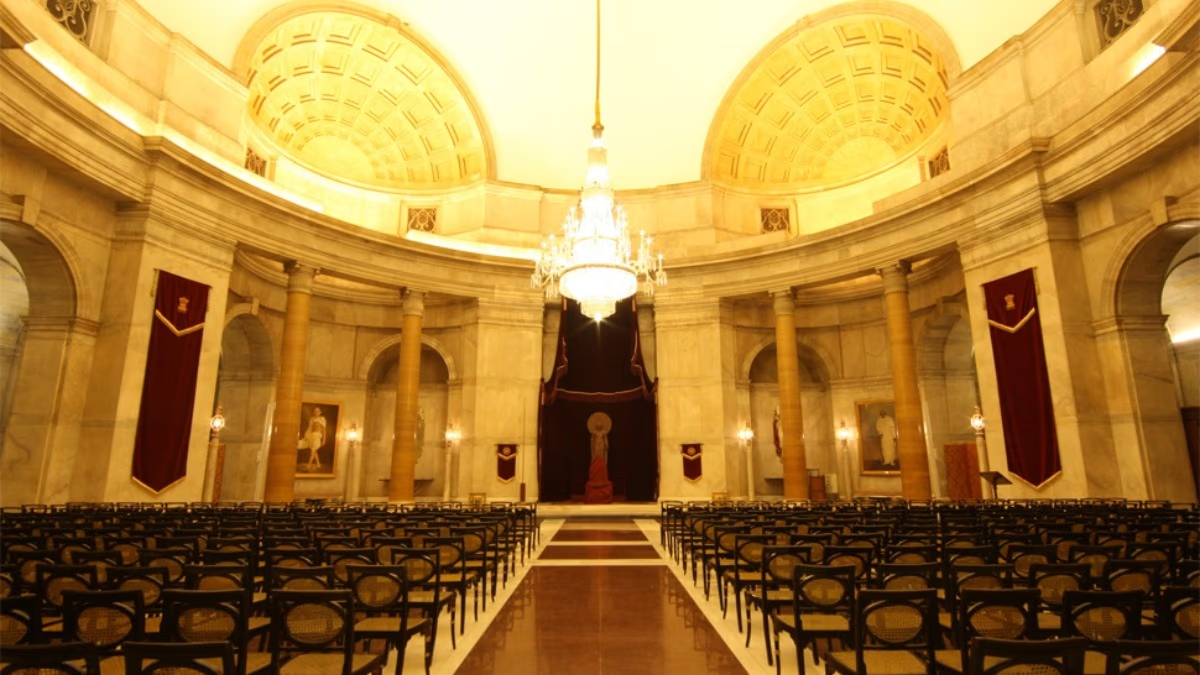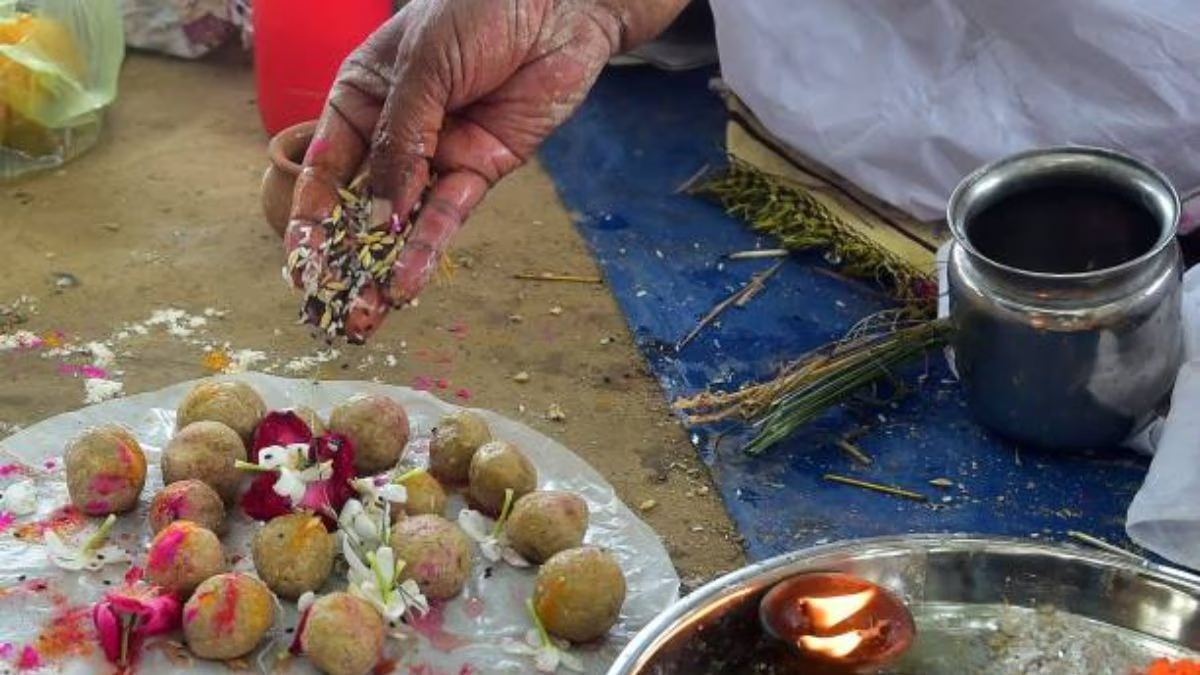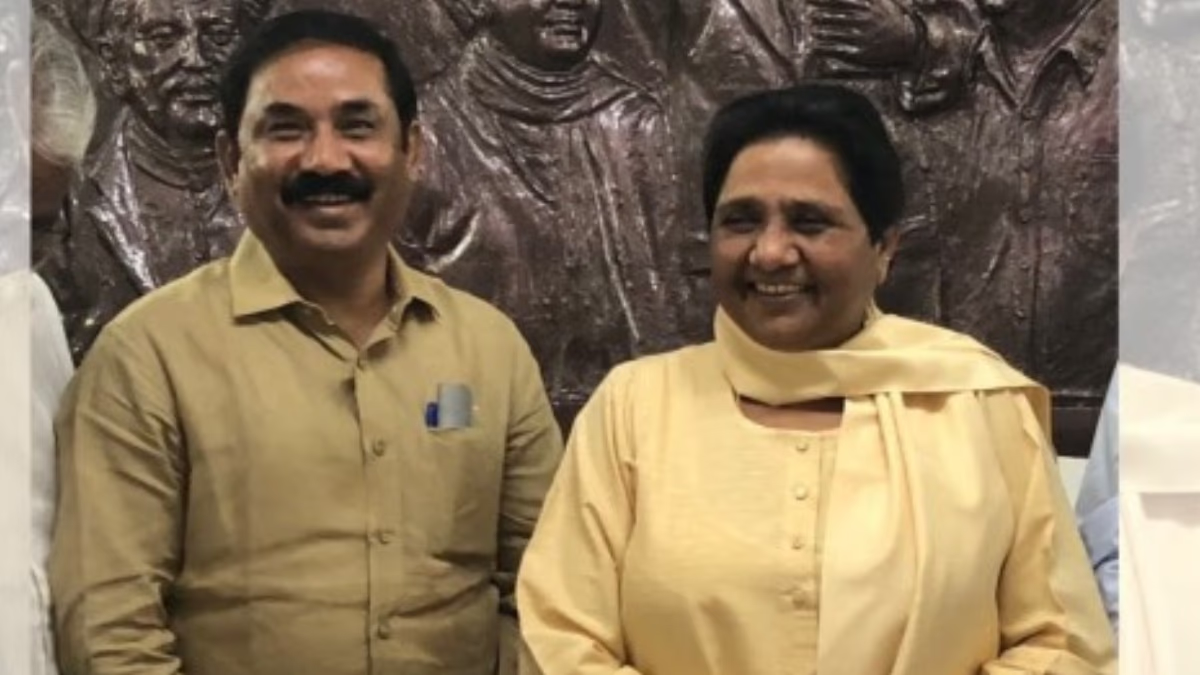The name of the Darbar Hall in the President's House has been changed to Republic Pavilion, and Ashoka Hall is now known as Ashoka Pavilion. The government states that the term 'Darbar' refers to the courts and assemblies of Indian rulers and colonial British, which lost their relevance after India became a republic. To bring uniformity in language, 'Ashoka Hall' has been renamed Ashoka Pavilion. Let's explore more about the newly named Republic Pavilion and Ashoka Pavilion...
The Story of Darbar Hall...
The Darbar Hall (Republic Pavilion) in the President's House is a site where national awards are presented and has witnessed many historical changes in India. The Darbar Hall, now called Republic Pavilion, was originally known as the Throne Room. It is the same hall where, after India gained independence, the first government of independent India took the oath on August 15, 1947, under the leadership of Pandit Jawaharlal Nehru.
Furthermore, in 1977, upon the death of President Fakhruddin Ali Ahmed, it was used to pay tribute to India's fifth president. The President's House, built over 17 years for the Viceroy, used to host the Viceroy's court in the Darbar Hall during British rule.
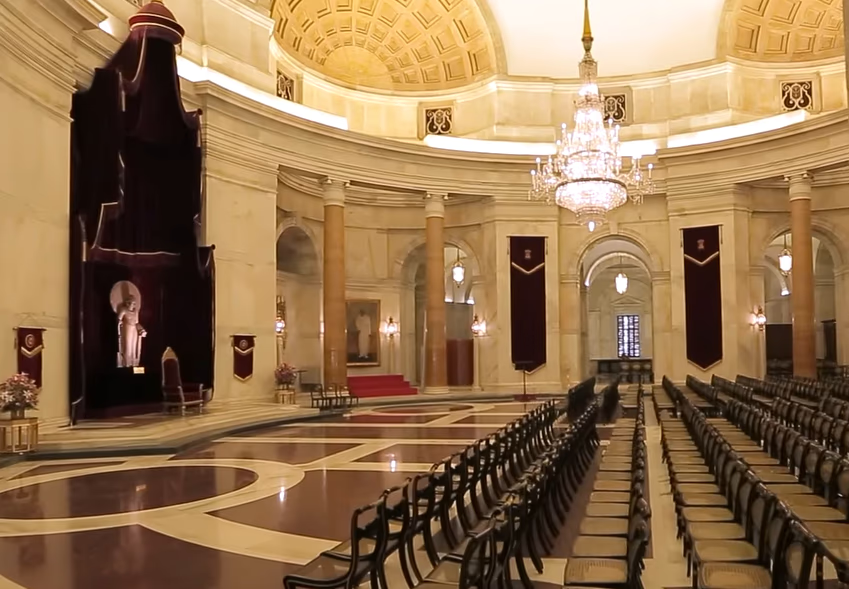
Source: aajtak
How Grand is the Darbar Hall?
The Darbar Hall is considered the most magnificent hall in the President's House. It is situated right under the central dome of the President's House and has three entrances. The walls are 42 feet high and adorned with white marble. A grand chandelier made of Belgian glass, which is 33 meters long, enhances its beauty.
The hall is extensively marbled, with white marble sourced from Makrana and Alwar, gray marble from Marwar, green marble from Baroda and Ajmer, and pink marble from Alwar, Makrana, and Haribagh. Additionally, there’s a chocolate-colored marble imported from Italy.
Upon entering the Darbar Hall or viewing its pictures, you will notice a statue of Lord Buddha, a fifth-century artifact. The President's chair is placed right in front of this statue. Initially, chairs for the Viceroy and his wife were placed here. The hall also houses numerous paintings featuring the country’s political leaders.
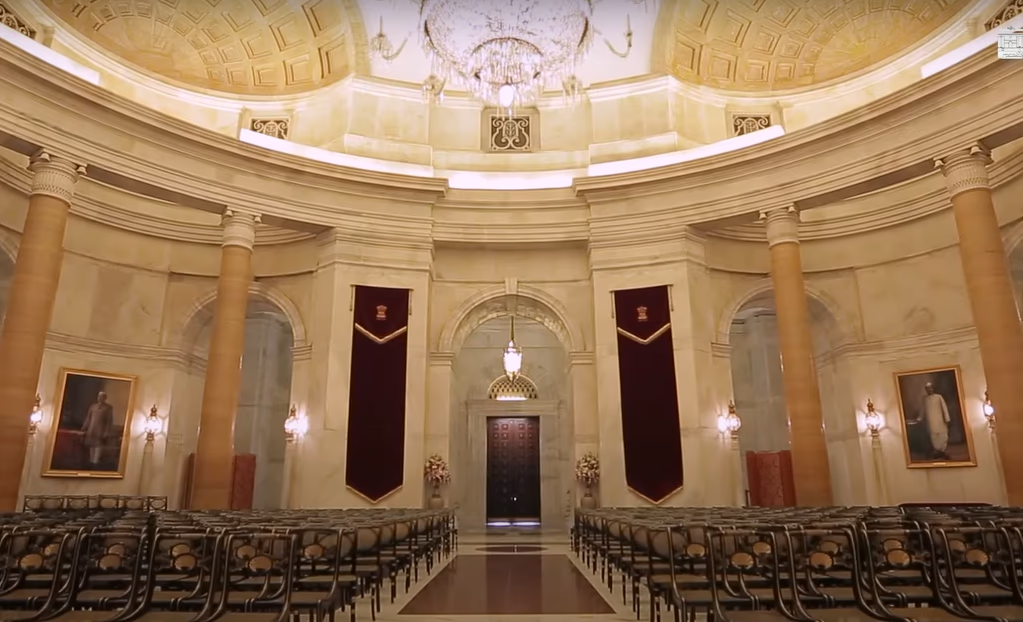
Source: aajtak
The Grand Ashoka Hall
The Ashoka Hall in the President's House is used for special ceremonies, although it was originally a state ballroom. The floor is made of wood, and a central ceiling painting features the portrait of Fath Ali Shah, which was imported from London and is quite unique.
There are six chandeliers made of Belgian glass, adding to the hall’s splendor. The French windows of Ashoka Hall offer a view of the Mughal Gardens. The walls are made of yellow-grey marble, and the hall is renowned for the paintings that adorn it.
